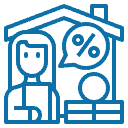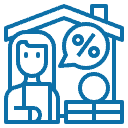City zoning is used to ensure that local property is developed in accordance with the land around it, so that planned communities and areas can develop alongside each other in an orderly, planned manner. Zoning laws in King County divide property into residential, commercial, and industrial zones, with multiple subdivisions. For rental property, it is crucial to pay attention to the zoning, because it affects how you can rent out property, and what you can do with your investment.
Single-Family Zoning
Single Family Zoning codes vary depending on where your property is located in King County, but always starts with an ‘SF’. For example, Seattle is home to SF5000, SF7200, and SF9600 zones. These are single family zones which allow for one detached home per lot. The numbers denote the minimum lot area in square feet for properties in the zone. So any home in an SF5000 zone should have a lot of a minimum of 5,000 square feet, and a yard of at least 20 feet. Single family zones are also required to have one parking space per lot, a specific amount of yard coverage, and have regulated building height and roof slope. Seattle’s single family zoning law states that you can have a maximum of 8 unrelated people in a single family home.
RSL – RSL is a subset of Single Family Zoning, and stands for Residential Small Lot. These lots are a minimum of 2,500 square feet, require a minimum of 30 feet total of front and back yard space, and require a single parking lot available per lot.
RSL-T – RSL-T zoning allows for two unattached homes on a single lot of 5,000 square feet or more. The homes can cover a maximum of 50% of the lot, and the front and back yards must have a sum of 35 feet. The T stands for Tandem Housing.
RSL-C – RSL-C zoning is a Residential Small Lot with Cottages. RSL-C zones allow for four to 12 detached single family homes on a single lot, with a minimum lot size of 6,400 square feet, and a minimum of 400 square feet of free space per cottage.
Multi-Family Zoning
Multi-Family zoning is divided into LR1, LR2, and LR3 sections. Most have a variety of different home types, and each individual zone has requirements for the density of homes, the type of homes, and the setbacks and yard spaces. Houses include cottages, rowhouses, townhouses, and apartments. The type of multi-family zone also affects the size of the lots. You can check the exact minimum and maximum definitions here. In addition, many multi-family zone properties should have green grass or shrubs on about 60% of the lot.
- LR1 – 1 unit per 2200 square feet of lot for townhouses to no limit for row houses
- LR2 – 1 unit per 1600 feet for cottages to no limit for most other multi-family units
- LR3 – 1 unit per 1600 square feet to no limit.
How Zoning Affects Your Rental
In addition to very obvious limitations for renting, building additions, and developing property in specific zones, property zones affect the value of property. For example, a home in an SF9600 zone is worth a lot more than property in an RSL zone, because the lot is 9,600 square feet instead of 2,500. However, you can also get more value per square foot from a lot that allows multi-family zoning. An LR1 lot with 12 cottages will pay itself off more quickly than a SF5000 home, simply because there are more units to rent out. If you own a home in a single family zone, you also have to be careful with allowing subletting, renting to more than one person, or allowing the tenant to start a home business, which could cause business traffic in the area. Individual zones also require more or less lawn care and maintenance, different amounts of green development, different security and amenity features, and can affect what you are allowed to do with the property.
You can check your property zone here or learn more about King County Zoning Law here. If you need property management assistance from an expert who is familiar with local zoning and other real estate laws, contact SJA Property Management for a free quote.














